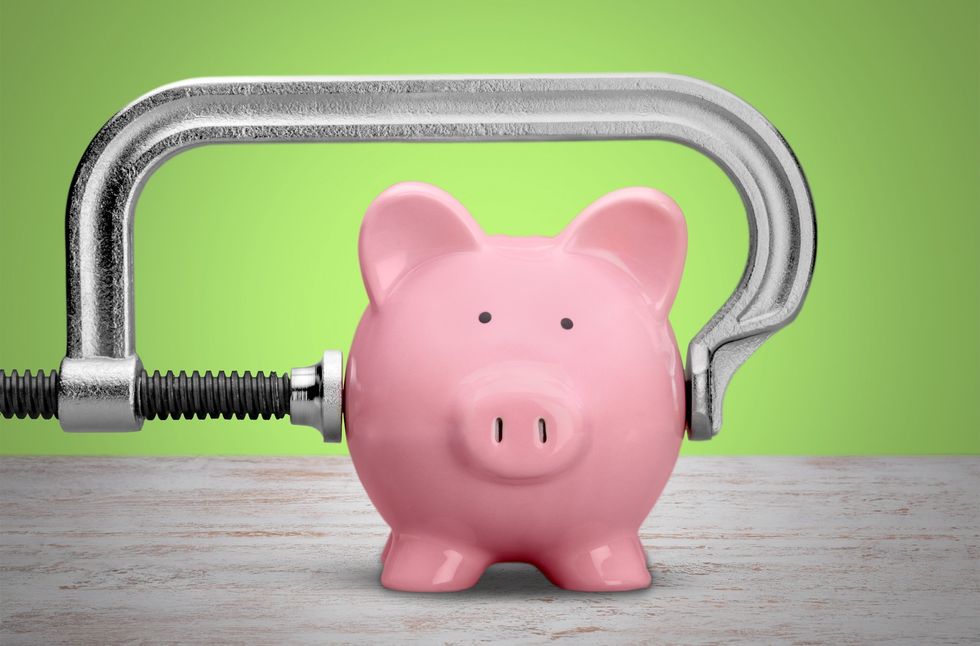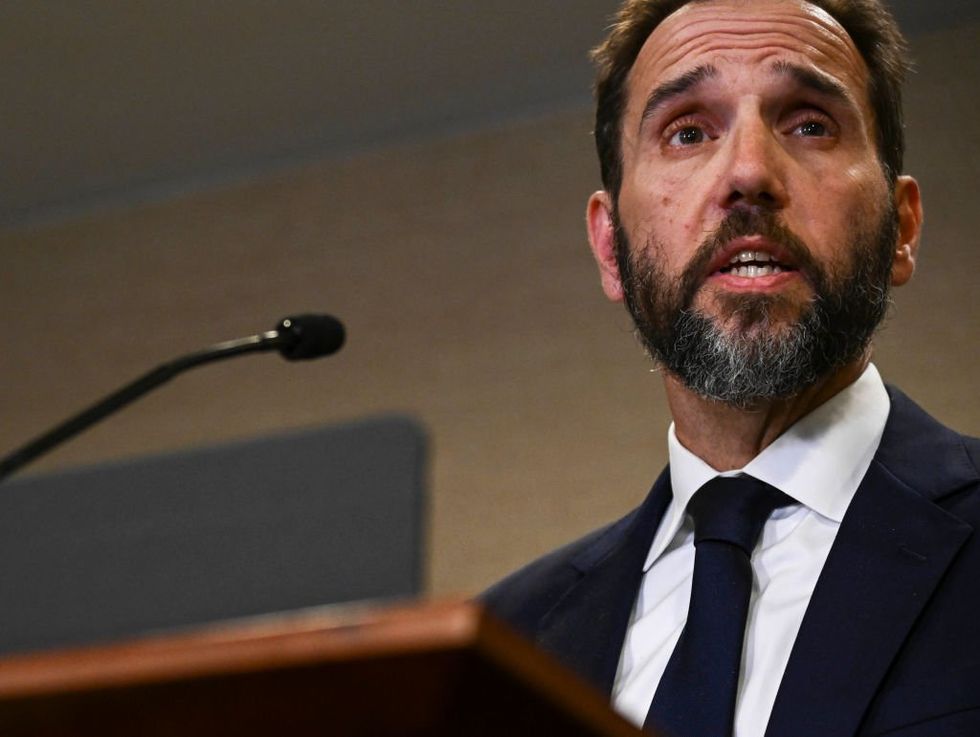Fake numbers, real pain: How the feds fudged our economy
Imagine an entire year’s worth of stock market gains built on economic and employment data that were false from the start. The government’s constant downward revisions of this data, culminating in last week’s 800,000-job reduction, reveal the reality of our fake economy, which benefits those connected to the government while harming everyone else. No plan by the Federal Reserve, including interest rate cuts, will solve the permanent stagflation facing Americans.Every economic indicator, whether employment, GDP reports, inflation, manufacturing, or retail sales, has become a joke. The government initially publishes mediocre-to-positive data, which gives the stock market a temporary boost. However, these numbers are always revised downward or negatively in subsequent months. Even before last week’s shocking announcement, U.S. job numbers had already been revised lower by three-quarters of a million jobs compared to initial reports since February.Government spending has resulted in 39 consecutive months of core inflation above 3%, leading to record household and credit card debt.Data from 15 of the past 16 months were coincidentally revised in only one direction — downward. We all knew that the published job numbers never reflected reality, in which 59% of American adults believe we are, in fact, in a recession. Then came the bombshell from the Bureau of Labor Statistics, finally admitting that 818,000 reported new jobs never actually existed, marking the largest revision since 2009.Since July 2023, only 1.4 million jobs have been created, while the employment-age population grew by 1.64 million, indicating the market contracted relative to the population. Most of these new jobs were part-time, government or government-adjacent, and predominantly went to noncitizens.In last week’s report, the only upward revisions were for government jobs and health care, which are essentially controlled or dominated by the government. Meanwhile, manufacturing was revised downward by 115,000 jobs, bringing us back to June 2022 levels. This is astounding, considering the government has pumped trillions of dollars into that sector through the infrastructure bill, the Green New Deal, and record government spending.Consider all the inflationary spending the government has saddled consumers with through those bills, in addition to the $7 trillion in COVID spending and monetary pumping. What have we gained from all that inflation? Only $6.6 trillion in additional GDP growth since the fourth quarter of 2020, when we recovered the pre-COVID baseline. At the same time, we have incurred $12 trillion in new debt since COVID. In other words, the entirety of the GDP growth came from government spending, but we only got 55 cents on the dollar. We are left with a net-negative employment market and a record-high cost of living that is unsustainable.This new employment data aligns with the Philadelphia Fed report, which shows that 27% of non-manufacturers surveyed are experiencing decreases in full-time jobs — the highest share since COVID. Meanwhile, the ISM Manufacturing PMI index has contracted in 20 of the last 21 months, marking the longest streak in over 25 years. Even retail spending, boosted by government intervention, has finally hit a brick wall, with June’s numbers sharply revised downward.All this government spending has resulted in 39 consecutive months of core inflation above 3%, leading to record household and credit card debt, now reaching $17.8 trillion and $1.14 trillion, respectively. Credit card debt has grown by 50% since Biden took office, as the public burned through $2.1 trillion of excess savings to maintain a standard of living created by government profligacy, insidious political payouts, and venture socialism. As a result, credit card interest rates have hit a record 22.76%.What is all this human calamity and destitution for? To inflate the stock market, which is essentially composed of the “Magnificent Seven” companies, allowing them to donate to left-wing causes. Today, Amazon, Apple, Meta, Microsoft, Nvidia, Alphabet, and Tesla represent 54% of our entire GDP and 34% of the market value of the S&P 500. While other companies and household stock portfolios have benefited from their success, the gains are outweighed for all but the wealthiest Americans by the inflationary cost of basic living expenses, which consume most of the income for the bottom 90% of earners.Small and mid-sized businesses are suffering. While the bigger indexes are near record highs, the Russell 2000 Index is 9% off its all-time high. Small business Chapter 11 filings are up 61% year over year, with overall bankruptcy filings rising faster than at any point since the Great Recession.The government’s fuzzy math in its economic data not only obscures the recession and stagflation that most of the country is experiencing but also artificially inflates their special interests. For example, Home Depot and Lowe’s have reported negative sales for the


Imagine an entire year’s worth of stock market gains built on economic and employment data that were false from the start. The government’s constant downward revisions of this data, culminating in last week’s 800,000-job reduction, reveal the reality of our fake economy, which benefits those connected to the government while harming everyone else. No plan by the Federal Reserve, including interest rate cuts, will solve the permanent stagflation facing Americans.
Every economic indicator, whether employment, GDP reports, inflation, manufacturing, or retail sales, has become a joke. The government initially publishes mediocre-to-positive data, which gives the stock market a temporary boost. However, these numbers are always revised downward or negatively in subsequent months. Even before last week’s shocking announcement, U.S. job numbers had already been revised lower by three-quarters of a million jobs compared to initial reports since February.
Government spending has resulted in 39 consecutive months of core inflation above 3%, leading to record household and credit card debt.
Data from 15 of the past 16 months were coincidentally revised in only one direction — downward. We all knew that the published job numbers never reflected reality, in which 59% of American adults believe we are, in fact, in a recession. Then came the bombshell from the Bureau of Labor Statistics, finally admitting that 818,000 reported new jobs never actually existed, marking the largest revision since 2009.
Since July 2023, only 1.4 million jobs have been created, while the employment-age population grew by 1.64 million, indicating the market contracted relative to the population. Most of these new jobs were part-time, government or government-adjacent, and predominantly went to noncitizens.
In last week’s report, the only upward revisions were for government jobs and health care, which are essentially controlled or dominated by the government. Meanwhile, manufacturing was revised downward by 115,000 jobs, bringing us back to June 2022 levels. This is astounding, considering the government has pumped trillions of dollars into that sector through the infrastructure bill, the Green New Deal, and record government spending.
Consider all the inflationary spending the government has saddled consumers with through those bills, in addition to the $7 trillion in COVID spending and monetary pumping. What have we gained from all that inflation? Only $6.6 trillion in additional GDP growth since the fourth quarter of 2020, when we recovered the pre-COVID baseline. At the same time, we have incurred $12 trillion in new debt since COVID. In other words, the entirety of the GDP growth came from government spending, but we only got 55 cents on the dollar. We are left with a net-negative employment market and a record-high cost of living that is unsustainable.
This new employment data aligns with the Philadelphia Fed report, which shows that 27% of non-manufacturers surveyed are experiencing decreases in full-time jobs — the highest share since COVID. Meanwhile, the ISM Manufacturing PMI index has contracted in 20 of the last 21 months, marking the longest streak in over 25 years. Even retail spending, boosted by government intervention, has finally hit a brick wall, with June’s numbers sharply revised downward.
All this government spending has resulted in 39 consecutive months of core inflation above 3%, leading to record household and credit card debt, now reaching $17.8 trillion and $1.14 trillion, respectively. Credit card debt has grown by 50% since Biden took office, as the public burned through $2.1 trillion of excess savings to maintain a standard of living created by government profligacy, insidious political payouts, and venture socialism. As a result, credit card interest rates have hit a record 22.76%.
What is all this human calamity and destitution for? To inflate the stock market, which is essentially composed of the “Magnificent Seven” companies, allowing them to donate to left-wing causes. Today, Amazon, Apple, Meta, Microsoft, Nvidia, Alphabet, and Tesla represent 54% of our entire GDP and 34% of the market value of the S&P 500. While other companies and household stock portfolios have benefited from their success, the gains are outweighed for all but the wealthiest Americans by the inflationary cost of basic living expenses, which consume most of the income for the bottom 90% of earners.
Small and mid-sized businesses are suffering. While the bigger indexes are near record highs, the Russell 2000 Index is 9% off its all-time high. Small business Chapter 11 filings are up 61% year over year, with overall bankruptcy filings rising faster than at any point since the Great Recession.
The government’s fuzzy math in its economic data not only obscures the recession and stagflation that most of the country is experiencing but also artificially inflates their special interests. For example, Home Depot and Lowe’s have reported negative sales for the past several quarters. Yet, the U.S. Census Retail Sales report shows home improvement store sales are moving higher. It’s hard to trust this data when the two largest home improvement stores are clearly reporting recession-like sales.
The U.S. Census has revised its monthly retail sales report downward for seven of the past nine months. This has artificially distorted the stock market over the past year, creating an image of a healthier economy than what is actually happening on Main Street.
The same distortion applies to inflation data. The CPI reports that food prices are up 22% since 2021, but real-world experience suggests the increase is much higher. The CPI also shows rent rising 24% since 2020, while Zillow’s rent index indicates the increase is closer to 34%. Even more shockingly, the CPI report claims a 30% drop in health insurance prices over the past two years. In reality, both private and corporate health insurance plans are increasing every year and are at record highs.
The 818,000 jobs revision is just a public acknowledgment of what we already knew from most other government economic reports. Consider these reports the economic equivalent of “safe and effective.”
Originally Published at Daily Wire, World Net Daily, or The Blaze
What's Your Reaction?
































































































